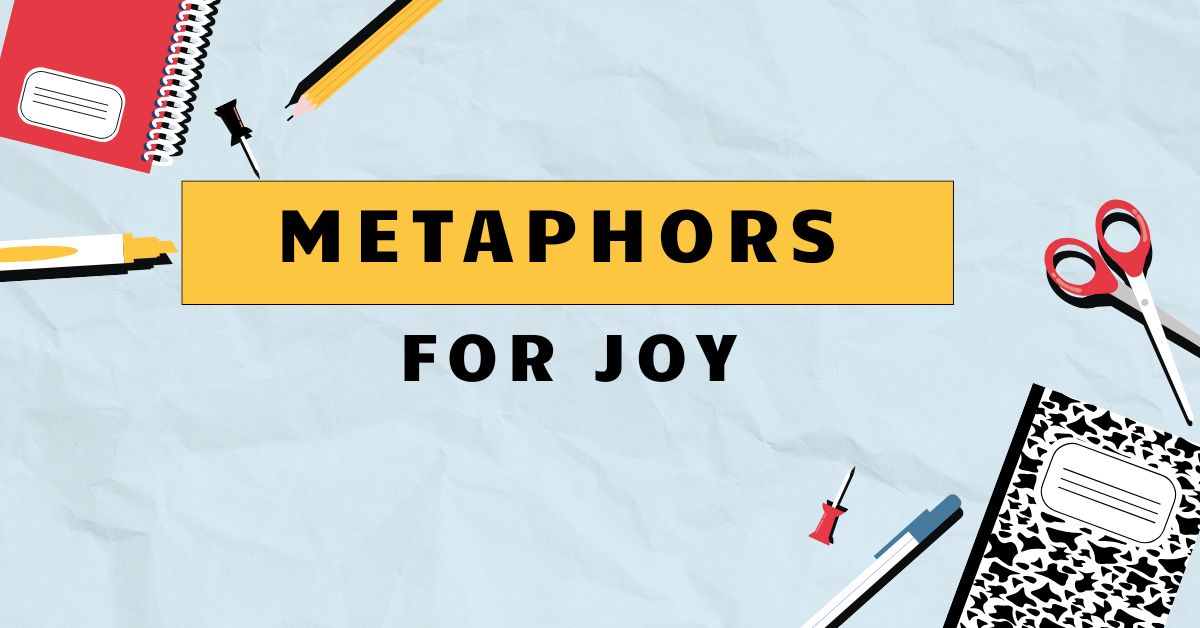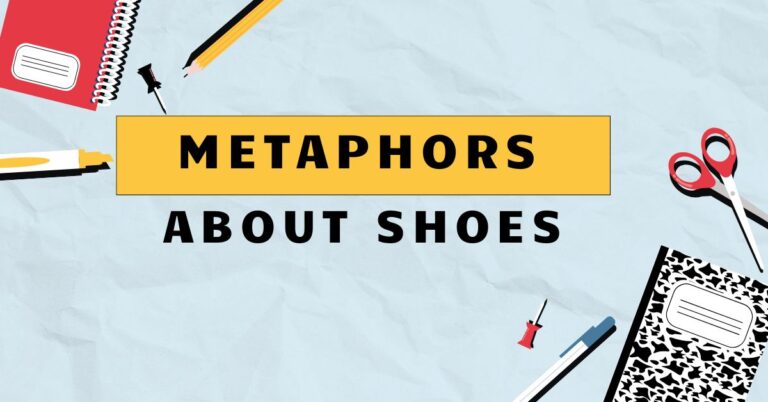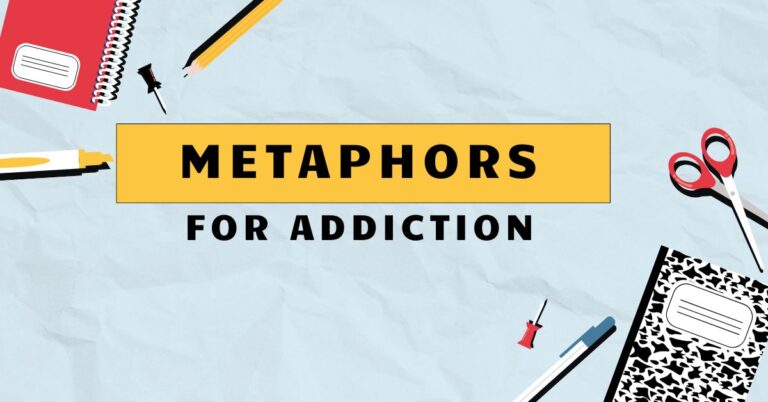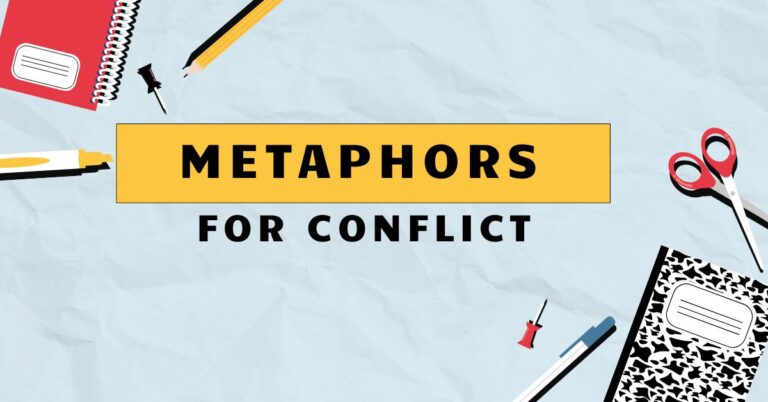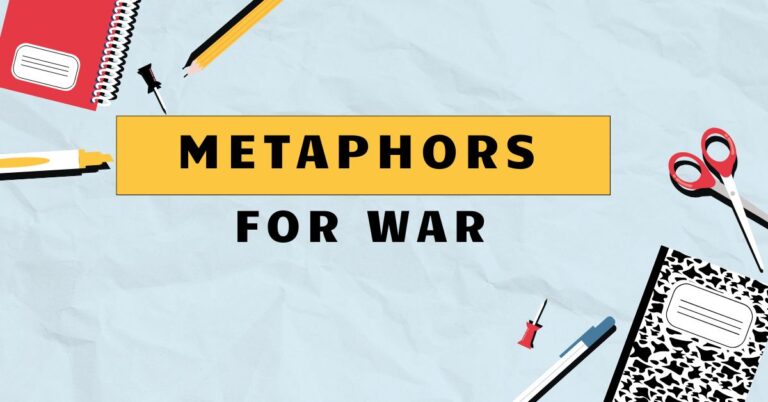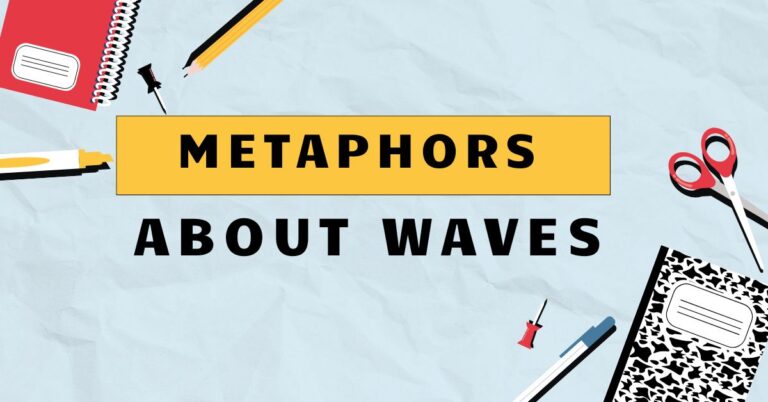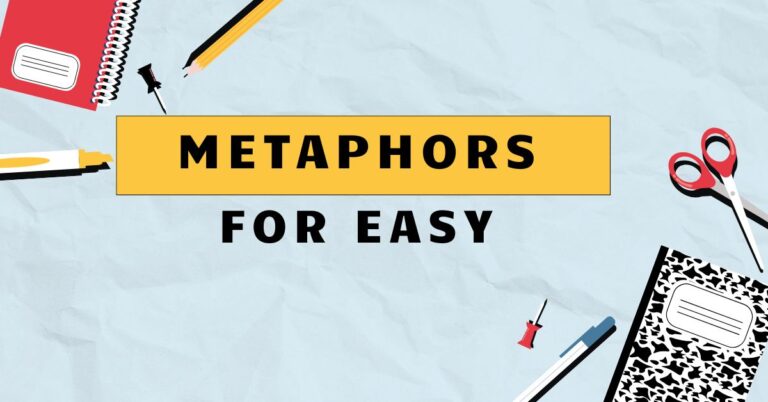31 Metaphors for Joy: Expressing Happiness in Figurative Language
Understanding metaphors for joy allows us to express profound emotions in creative and impactful ways. Metaphors, a cornerstone of figurative language, enrich our communication by painting vivid pictures and conveying complex feelings beyond literal descriptions.
This knowledge is invaluable for English language learners, writers, and anyone seeking to articulate joy with greater nuance and artistry. By exploring various types of metaphors and practical examples, you’ll enhance your ability to convey happiness in diverse and engaging contexts.
Table of Contents
- Introduction
- Definition of Metaphor for Joy
- Structural Breakdown of Metaphors for Joy
- Types and Categories of Metaphors for Joy
- Examples of Metaphors for Joy
- Usage Rules for Metaphors for Joy
- Common Mistakes with Metaphors for Joy
- Practice Exercises
- Advanced Topics in Metaphors for Joy
- Frequently Asked Questions (FAQ)
- Conclusion
Definition of Metaphor for Joy
A metaphor for joy is a figure of speech that describes happiness or a joyful state by comparing it to something else that shares similar qualities. Unlike similes, which use “like” or “as” to make a comparison, metaphors directly equate joy with another object, concept, or experience.
The primary function of a metaphor for joy is to evoke a feeling or image that resonates with the audience, making the emotion more tangible and relatable.
Metaphors for joy fall under the broader category offigurative language, which includes similes, personification, hyperbole, and irony. The effectiveness of a metaphor lies in its ability to create a connection between two seemingly unrelated things, thereby providing a fresh perspective on the emotion being conveyed.
The context in which a metaphor is used significantly impacts its interpretation; a metaphor that resonates in one cultural context may not have the same effect in another.
The use of metaphors for joy is prevalent in literature, poetry, music, and everyday conversation. They allow us to express the abstract nature of happiness in a more concrete and accessible way, adding depth and richness to our language.
By understanding and using metaphors effectively, we can enhance our communication skills and connect with others on a deeper emotional level.
Structural Breakdown of Metaphors for Joy
Metaphors for joy typically consist of two main elements: thetenorand thevehicle. The tenor is the subject being described (in this case, joy), and the vehicle is the object or concept to which joy is being compared.
The connection between the tenor and the vehicle is based on shared characteristics or qualities.
For example, in the metaphor “Joy is sunshine,” the tenor is “joy,” and the vehicle is “sunshine.” The shared characteristics are warmth, brightness, and a sense of well-being. The metaphor suggests that joy, like sunshine, brings warmth and light into one’s life.
The structure can be represented as: Joy (Tenor) = Sunshine (Vehicle).
The effectiveness of a metaphor also depends on theground, which is the common ground or shared qualities between the tenor and the vehicle. In the example above, the ground includes warmth, brightness, and the ability to uplift.
Understanding the ground is crucial for interpreting the metaphor correctly. The absence of a clear ground can lead to confusion or misinterpretation.
The context in which the metaphor is used provides additional clues about its meaning. For example, if someone says, “Her laughter was a melody,” the context might reveal that the laughter was pleasant, harmonious, and uplifting.
The structural analysis helps in understanding the underlying mechanism of how joy is being portrayed through figurative language.
Types and Categories of Metaphors for Joy
Metaphors for joy can be categorized based on the specific imagery or concepts they employ. Different categories evoke different aspects of joy, allowing for a nuanced expression of this emotion.
Light-Based Metaphors
Light-based metaphors associate joy with brightness, illumination, and clarity. They often suggest that joy dispels darkness or brings a sense of enlightenment.
Examples include: “Joy is sunshine,” “Happiness is a beacon,” “Her smile was a ray of light,” “Joy is a spark within us,” “The day was filled with luminous joy.” These metaphors often convey the idea that joy is radiant and transformative.
Warmth-Based Metaphors
Warmth-based metaphors connect joy with feelings of comfort, affection, and security. They emphasize the nurturing and comforting aspects of happiness.
Examples include: “Joy is a warm blanket,” “Happiness is a cozy fire,” “His love was a warm embrace,” “Joy is the heat of the sun,” “Her laughter was a warm breeze.” These metaphors suggest that joy is soothing and reassuring.
Flight-Based Metaphors
Flight-based metaphors associate joy with freedom, elevation, and a sense of liberation. They often suggest that joy allows one to rise above challenges or limitations.
Examples include: “Joy is taking flight,” “Happiness is soaring high,” “Her spirit took wing,” “Joy is an uplifting feeling,” “My heart floated with happiness.” These metaphors imply that joy is liberating and empowering.
Sweetness-Based Metaphors
Sweetness-based metaphors connect joy with pleasant tastes, delightful sensations, and indulgence. They emphasize the pleasurable and satisfying aspects of happiness.
Examples include: “Joy is sweet as honey,” “Happiness is a delicious treat,” “Her words were like sugar,” “Joy is a delightful surprise,” “Life is a sweet symphony.” These metaphors suggest that joy is pleasurable and delightful.
Growth-Based Metaphors
Growth-based metaphors associate joy with development, blossoming, and vitality. They often suggest that joy fosters personal growth and enriches life.
Examples include: “Joy is a blossoming flower,” “Happiness is a growing seed,” “Her spirit bloomed with joy,” “Joy is fertile ground,” “Life is a garden of happiness.” These metaphors imply that joy is nurturing and life-affirming.
Music-Based Metaphors
Music-based metaphors link joy with harmony, rhythm, and melody. They emphasize the uplifting and harmonious aspects of happiness.
Examples include: “Joy is a beautiful melody,” “Happiness is a harmonious chord,” “Her laughter was music to my ears,” “Joy is a rhythmic dance,” “Life is a song of happiness.” These metaphors suggest that joy is harmonious and uplifting.
Water-Based Metaphors
Water-based metaphors connect joy with fluidity, purity, and life-giving properties. They often suggest that joy is refreshing and essential for well-being.
Examples include: “Joy is a flowing river,” “Happiness is a clear stream,” “Her tears were tears of joy,” “Joy is an ocean of possibilities,” “Life is a sea of happiness.” These metaphors imply that joy is refreshing and abundant.
Examples of Metaphors for Joy
Here are several examples of metaphors for joy, categorized for clarity.
The following table illustrates light-based metaphors for joy, showcasing how joy is described by comparing it to sources of light.
| Metaphor | Explanation |
|---|---|
| Joy is sunshine on a cloudy day. | Joy, like sunshine, brightens and warms even the darkest moments. |
| Her smile was a beacon in the night. | Her smile, like a beacon, guides and reassures in times of uncertainty. |
| Happiness is a spark that ignites the soul. | Happiness, like a spark, can set off a chain reaction of positive emotions. |
| His laughter was a ray of light piercing through the gloom. | His laughter, like a ray of light, breaks through sadness and negativity. |
| Joy is the dawn of a new beginning. | Joy, like the dawn, signifies hope and fresh opportunities. |
| Her presence was a luminous glow in the room. | Her presence, like a luminous glow, filled the room with warmth and happiness. |
| Joy is the radiant beam of a lighthouse. | Joy, like the radiant beam of a lighthouse, provides guidance and hope. |
| His eyes were shining with pure joy. | His eyes, like shining lights, reflected his inner happiness. |
| Happiness is a flashlight in the dark. | Happiness, like a flashlight, helps navigate through difficult times. |
| Her spirit was a bright flame of joy. | Her spirit, like a bright flame, radiated happiness and positivity. |
| Joy is the twinkling of stars in the night sky. | Joy, like the twinkling of stars, brings wonder and beauty to life. |
| His words were like a sunbeam on my face. | His words, like a sunbeam, brought warmth and joy to my heart. |
| Happiness is a candle in the dark. | Happiness, like a candle, provides light and hope in times of darkness. |
| Her enthusiasm was a spark that ignited our excitement. | Her enthusiasm, like a spark, started a wave of excitement and joy. |
| Joy is the golden hour of the day. | Joy, like the golden hour, is a time of beauty and tranquility. |
| His smile was a spotlight on my day. | His smile, like a spotlight, made my day brighter and more joyful. |
| Happiness is a lantern guiding my way. | Happiness, like a lantern, guides me through life’s journey. |
| Her laughter was a flash of lightning in the storm. | Her laughter, like lightning, brought a sudden and powerful burst of joy. |
| Joy is the sunrise after a long night. | Joy, like the sunrise, symbolizes the end of hardship and the beginning of hope. |
| His spirit was a beacon of hope and joy. | His spirit, like a beacon, inspired hope and spread joy to others. |
The following table presents warmth-based metaphors for joy, illustrating how joy is described by comparing it to sources of warmth.
| Metaphor | Explanation |
|---|---|
| Joy is a warm hug on a cold day. | Joy, like a warm hug, provides comfort and reassurance. |
| Her love was a cozy fire in the winter. | Her love, like a cozy fire, warms and comforts during difficult times. |
| Happiness is a comforting blanket on a chilly night. | Happiness, like a comforting blanket, provides security and warmth. |
| His words were like a warm breeze on a summer day. | His words, like a warm breeze, are gentle, refreshing, and pleasant. |
| Joy is the warmth of the sun on your skin. | Joy, like the warmth of the sun, is soothing and revitalizing. |
| Her laughter was a warm embrace that enveloped the room. | Her laughter, like a warm embrace, filled the room with comfort and joy. |
| Joy is the gentle heat of a summer afternoon. | Joy, like the gentle heat of a summer afternoon, is relaxing and pleasant. |
| His presence was like a warm hearth in a cold house. | His presence, like a warm hearth, provided comfort and security. |
| Happiness is a cup of hot chocolate on a snowy day. | Happiness, like a cup of hot chocolate, is comforting and indulgent. |
| Her smile was a warm ray of sunshine in my heart. | Her smile, like a warm ray of sunshine, brought joy and comfort to my heart. |
| Joy is the feeling of sand between your toes on a warm beach. | Joy, like the feeling of sand between your toes, is relaxing and carefree. |
| His kindness was like a warm blanket of protection. | His kindness, like a warm blanket, provided comfort and security. |
| Happiness is a fireplace on a winter’s night. | Happiness, like a fireplace, is warm, inviting, and comforting. |
| Her gratitude was a warm hug to my spirit. | Her gratitude, like a warm hug, brought comfort and happiness to my spirit. |
| Joy is the warmth of a loving family. | Joy, like the warmth of a loving family, provides security and belonging. |
| His support was like a warm coat on a cold day. | His support, like a warm coat, provided comfort and protection. |
| Happiness is a hot bath after a long day. | Happiness, like a hot bath, is relaxing and rejuvenating. |
| Her encouragement was a warm fire that ignited my passion. | Her encouragement, like a warm fire, sparked my enthusiasm and passion. |
| Joy is the feeling of being wrapped in a warm towel. | Joy, like being wrapped in a warm towel, is comforting and soothing. |
| His compassion was a warm hand reaching out to help. | His compassion, like a warm hand, provided comfort and support. |
The following table displays flight-based metaphors for joy, illustrating how joy is described by comparing it to the act of flying or floating.
| Metaphor | Explanation |
|---|---|
| Joy is the feeling of taking flight. | Joy, like taking flight, is exhilarating and liberating. |
| Her spirit soared with happiness. | Her spirit, like a bird, rose high with joy. |
| Happiness is floating on a cloud. | Happiness, like floating on a cloud, is light, carefree, and blissful. |
| His heart took wing with joy. | His heart, like a bird, flew with happiness and excitement. |
| Joy is the feeling of flying without wings. | Joy, like flying without wings, is an incredible and boundless feeling. |
| Her laughter lifted my spirits higher than a kite. | Her laughter, like a kite, lifted my spirits to new heights. |
| Joy is the sensation of weightlessness. | Joy, like weightlessness, is freeing and unburdening. |
| His dreams took flight with newfound joy. | His dreams, like birds, soared with excitement and anticipation. |
| Happiness is floating down a gentle stream. | Happiness, like floating down a stream, is peaceful and effortless. |
| Her imagination soared with joyful ideas. | Her imagination, like a bird, flew freely with creative and joyful thoughts. |
| Joy is the feeling of being lifted up by angels. | Joy, like being lifted by angels, is divine and uplifting. |
| His aspirations soared on the wings of happiness. | His aspirations, like birds, rose high with hope and joy. |
| Happiness is floating in the sky like a balloon. | Happiness, like a balloon, is light, buoyant, and joyful. |
| Her enthusiasm lifted our spirits like a flock of birds. | Her enthusiasm, like a flock of birds, collectively lifted our spirits. |
| Joy is the sensation of being carried by the wind. | Joy, like being carried by the wind, is effortless and enchanting. |
| His optimism soared above the clouds of doubt. | His optimism, like a bird, flew high above negativity and doubt. |
| Happiness is flying over a rainbow. | Happiness, like flying over a rainbow, is magical and wondrous. |
| Her ideas lifted our team to new heights. | Her ideas, like wings, enabled our team to achieve greater success. |
| Joy is the feeling of being on top of the world. | Joy, like being on top of the world, is empowering and fulfilling. |
| His ambitions soared like an eagle in the sky. | His ambitions, like an eagle, flew high with strength and determination. |
Usage Rules for Metaphors for Joy
When using metaphors for joy, it is essential to follow certain rules to ensure clarity and effectiveness. The metaphor should berelevantandappropriateto the context.
A metaphor that is too abstract or unrelated to the subject matter can confuse the audience.
Consistencyis also crucial. Avoid mixing metaphors that create conflicting images.
For example, “Joy is a warm fire that soars through the sky” is a mixed metaphor because fire and soaring are not typically associated with each other. Choose metaphors that evoke a clear and consistent image.
Originalitycan make your writing more engaging. While common metaphors can be effective, using fresh and unique comparisons can capture the audience’s attention and make your message more memorable.
However, avoid being overly complex or obscure, as this can detract from the clarity of your message.
Consider youraudiencewhen choosing metaphors. A metaphor that resonates with one audience may not be effective for another.
Take into account the cultural background, age, and knowledge level of your audience. The goal is to create a connection that enhances understanding and appreciation.
Overusing metaphors can diminish their impact. Use them sparingly and strategically to highlight key points and evoke strong emotions.
When used effectively, metaphors can add depth, richness, and creativity to your writing and communication.
Common Mistakes with Metaphors for Joy
One common mistake is using clichéd metaphors, which are overused and lack originality. Examples include “Joy is a ray of sunshine” or “Happiness is a warm blanket.” While these metaphors are not incorrect, they lack the impact of more creative and original comparisons.
Another common mistake is usingmixed metaphors, which combine incongruous images or ideas. For example, “Joy is a blooming flower that flies through the sky” is a mixed metaphor because flowers do not typically fly.
This creates confusion and detracts from the clarity of the message.
Incorrect: Joy is a rollercoaster of emotions, a calm sea of tranquility.
Correct: Joy is a rollercoaster of emotions, full of ups and downs.
Incorrect: Happiness is a warm fire that dances in the wind.
Correct: Happiness is a warm fire, bringing comfort and light.
Using metaphors that aretoo abstractor difficult to understand can also be problematic. The metaphor should be relatable and evoke a clear image in the audience’s mind.
If the audience struggles to understand the comparison, the metaphor loses its effectiveness.
Incorrect: Joy is a fractal dimension of the soul.
Correct: Joy is a boundless expanse within the soul.
Incorrect: Happiness is a quantum entanglement of emotions.
Correct: Happiness is a deep connection of emotions.
Finally, misusing similes as metaphors is a common error. Remember that metaphors directly equate two things, while similes use “like” or “as” to make a comparison.
Incorrect:Joy is like sunshine. (This is a simile)Correct:Joy is sunshine.
(This is a metaphor)
Practice Exercises
Test your understanding of metaphors for joy with these exercises.
| Question | Answer |
|---|---|
| 1. Which of the following is a metaphor for joy: “Joy is like sunshine,” or “Joy is sunshine”? | Joy is sunshine. |
| 2. Identify the tenor and vehicle in the metaphor: “Her laughter was a melody.” | Tenor: Laughter; Vehicle: Melody |
| 3. Rewrite the simile “Happiness is like a warm blanket” as a metaphor. | Happiness is a warm blanket. |
| 4. Is “Joy is a warm fire that soars through the sky” a mixed metaphor? Why or why not? | Yes, it is a mixed metaphor because fire and soaring are incongruous. |
| 5. Create a metaphor for joy using the concept of a “flower.” | Joy is a blossoming flower. |
| 6. Which of the following is NOT a light-based metaphor for joy: “Joy is sunshine,” “Joy is a warm blanket,” or “Her smile was a beacon”? | Joy is a warm blanket. |
| 7. Identify the common mistake in the phrase: “Joy is like a rollercoaster, a calm sea of tranquility.” | Mixed metaphor. |
| 8. Transform “Happiness is as sweet as honey” into a metaphor. | Happiness is sweet honey. |
| 9. Is “Joy is a boundless expanse within the soul” a more effective or less effective metaphor than “Joy is a fractal dimension of the soul”? Why? | More effective, because it is easier to understand and more relatable. |
| 10. Create a warmth-based metaphor for joy. | Joy is a warm embrace. |
Exercise 2: Fill in the blanks with appropriate metaphors for joy.
| Question | Answer |
|---|---|
| 1. Her spirit was ________ with joy. | Soaring |
| 2. Happiness is ________ on a summer day. | Sunshine |
| 3. His laughter was ________ to my ears. | Music |
| 4. Joy is a ________ in the darkness. | Beacon |
| 5. Her words were ________ to my soul. | Honey |
| 6. Joy is a ________ of hope and happiness. | Fountain |
| 7. Happiness is ________ on a cold night. | A warm fire |
| 8. His presence was ________ in the room. | Light |
| 9. Joy is the feeling of ________ without limits. | Flying |
| 10. Her enthusiasm was ________ that ignited our passion. | A spark |
Exercise 3: Identify the type of metaphor used in each sentence (Light-Based, Warmth-Based, Flight-Based, Sweetness-Based, Growth-Based, Music-Based, Water-Based).
| Question | Answer |
|---|---|
| 1. Joy is a flowing river of happiness. | Water-Based |
| 2. Her laughter was music to my ears. | Music-Based |
| 3. Happiness is a growing seed of potential. | Growth-Based |
| 4. Joy is sweet as honey on my tongue. | Sweetness-Based |
| 5. Her spirit soared with newfound joy. | Flight-Based |
| 6. Happiness is a warm embrace on a cold day. | Warmth-Based |
| 7. Joy is a beacon in the darkness. | Light-Based |
| 8. Life is a song of happiness. | Music-Based |
| 9. Joy is a clear stream of consciousness. | Water-Based |
| 10. His smile was a ray of light in the room. | Light-Based |
Advanced Topics in Metaphors for Joy
For advanced learners, exploring the cultural nuances of metaphors for joy can be particularly insightful. Different cultures may use different imagery and concepts to express happiness.
Understanding these variations can enhance cross-cultural communication and appreciation.
The use of extended metaphors, where a single metaphor is developed and expanded throughout a piece of writing, can also add depth and complexity. For example, a writer might use the metaphor of “joy as a garden” and then explore various aspects of this garden, such as planting seeds, nurturing growth, and harvesting fruits.
Exploring the works of famous poets and writers can provide inspiration and insight into the effective use of metaphors. Analyzing how they use metaphors to convey emotions can help you develop your own skills.
Pay attention to the context, imagery, and emotional impact of their metaphors.
The role ofcognitive linguisticsin understanding metaphors is another advanced topic. Cognitive linguistics views metaphors as fundamental to human thought and understanding.
Exploring this perspective can provide a deeper appreciation for the power and significance of metaphors in language and communication.
Finally, consider the ethical implications of using metaphors. Metaphors can be powerful tools for persuasion and manipulation.
It is important to use them responsibly and ethically, ensuring that they are not used to mislead or deceive.
Frequently Asked Questions (FAQ)
1. What is the difference between a metaphor and a simile?
A metaphor directly equates two different things to suggest a resemblance or shared quality, without using “like” or “as.” For example, “Joy is sunshine.” A simile, on the other hand, uses “like” or “as” to make a comparison. For example, “Joy is like sunshine.” The main difference is the directness of the comparison; metaphors assert a direct equivalence, while similes suggest similarity.
2. How can I create more original metaphors for joy?
To create original metaphors, think beyond common associations. Consider your personal experiences, observations, and unique perspectives.
Brainstorm a list of things that evoke feelings of joy for you, and then explore possible connections between these things and the emotion of joy. Use vivid imagery and sensory details to make your metaphors more engaging.
3. What is a mixed metaphor, and why should I avoid it?
A mixed metaphor combines incongruous images or ideas, creating confusion and undermining the clarity of the message. For example, “Joy is a warm fire that soars through the sky” is a mixed metaphor because fire and soaring are not typically associated with each other.
You should avoid mixed metaphors because they can confuse your audience and weaken the impact of your writing.
4. How does context affect the interpretation of a metaphor?
Context plays a crucial role in the interpretation of a metaphor. The surrounding words, sentences, and overall situation provide clues about the intended meaning of the metaphor.
Cultural background, personal experiences, and shared knowledge also influence how a metaphor is understood. Always consider the context when using or interpreting metaphors.
5. Can metaphors be used in everyday conversation?
Yes, metaphors are commonly used in everyday conversation to express emotions, ideas, and experiences in a more vivid and engaging way. They can add color and depth to your communication, making it more memorable and relatable.
Using metaphors effectively can enhance your ability to connect with others on an emotional level.
6. How can I improve my ability to understand and use metaphors?
To improve your ability to understand and use metaphors, read widely and pay attention to how writers and speakers use figurative language. Analyze the metaphors you encounter, considering the tenor, vehicle, and ground.
Practice creating your own metaphors, experimenting with different images and concepts. Seek feedback from others to refine your skills.
7. Are there any cultural differences in the use of metaphors for joy?
Yes, there can be significant cultural differences in the use of metaphors for joy. Different cultures may associate different images and concepts with happiness, reflecting their unique values, beliefs, and experiences.
Understanding these cultural nuances can help you communicate more effectively and avoid misinterpretations.
8. What is the role of metaphors in poetry and literature?
Metaphors play a central role in poetry and literature, allowing writers to express complex emotions and ideas in a concise and evocative way. They can add depth, richness, and layers of meaning to their work, engaging the reader on multiple levels.
Metaphors are often used to create imagery, symbolism, and thematic resonance.
9. How can I avoid using clichéd metaphors for joy?
To avoid using clichéd metaphors, strive for originality and creativity. Think beyond common associations and explore unique connections between joy and other concepts.
Use vivid imagery and sensory details to make your metaphors more engaging and memorable. Seek inspiration from diverse sources, such as nature, art, music, and personal experiences.
10. What are extended metaphors, and how are they used?
Extended metaphors are metaphors that are developed and expanded throughout a piece of writing. They involve exploring various aspects of the metaphor, drawing out multiple connections and implications.
Extended metaphors can add depth, complexity, and thematic coherence to your writing, creating a richer and more engaging experience for the reader.
Conclusion
Mastering metaphors for joy is a valuable skill for anyone seeking to express happiness with greater depth and creativity. By understanding the structure, types, and usage rules of metaphors, you can enhance your communication skills and connect with others on a more emotional level.
Avoid common mistakes, such as using clichéd or mixed metaphors, and strive for originality and clarity.
The ability to use metaphors effectively can enrich your writing, speaking, and overall understanding of language. Continue to practice and explore different metaphors, paying attention to their impact and resonance.
With dedication and creativity, you can unlock the power of metaphors to convey the profound and multifaceted nature of joy. Embrace the art of figurative language, and let your expressions of happiness shine with originality and depth.

